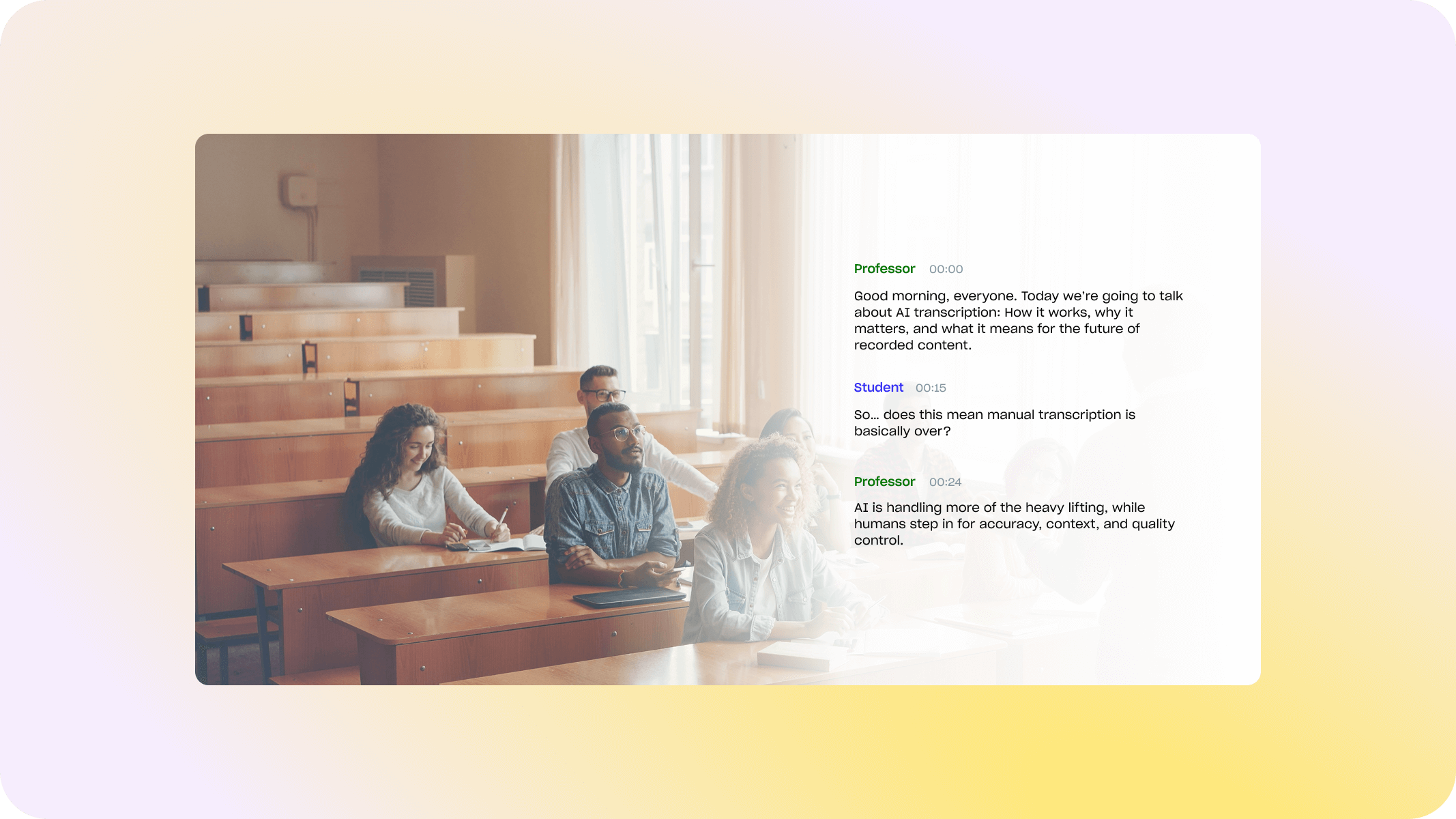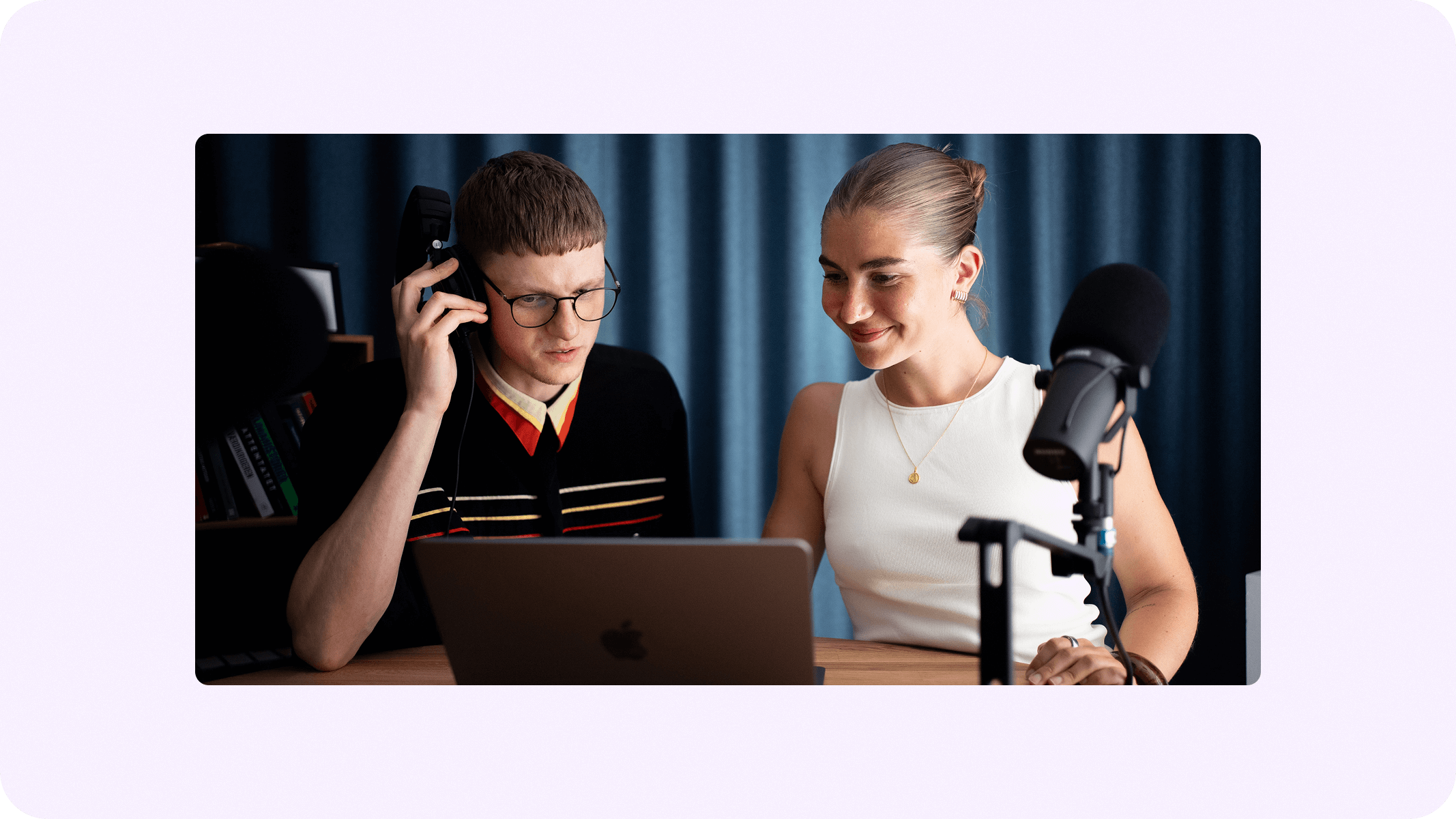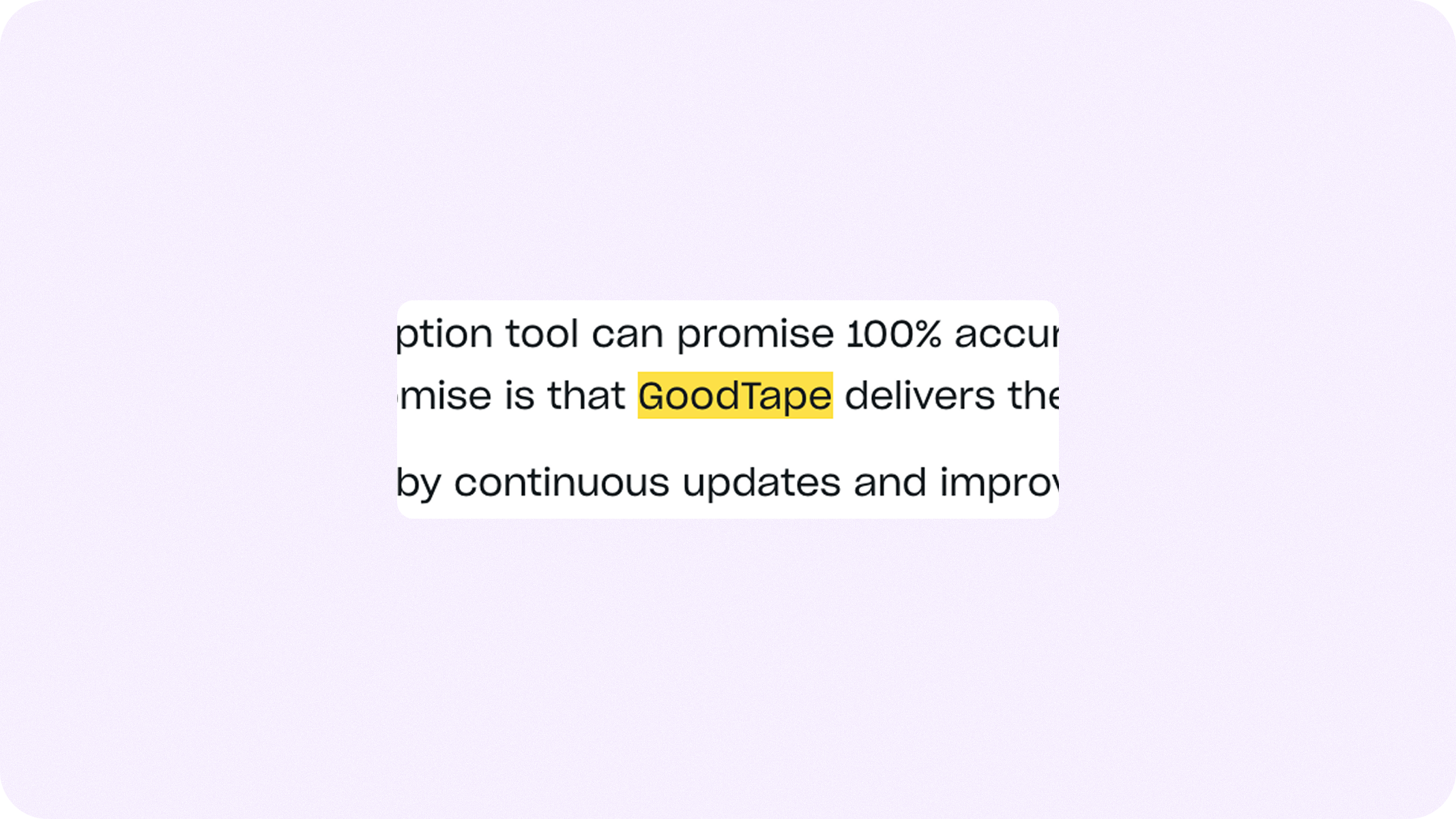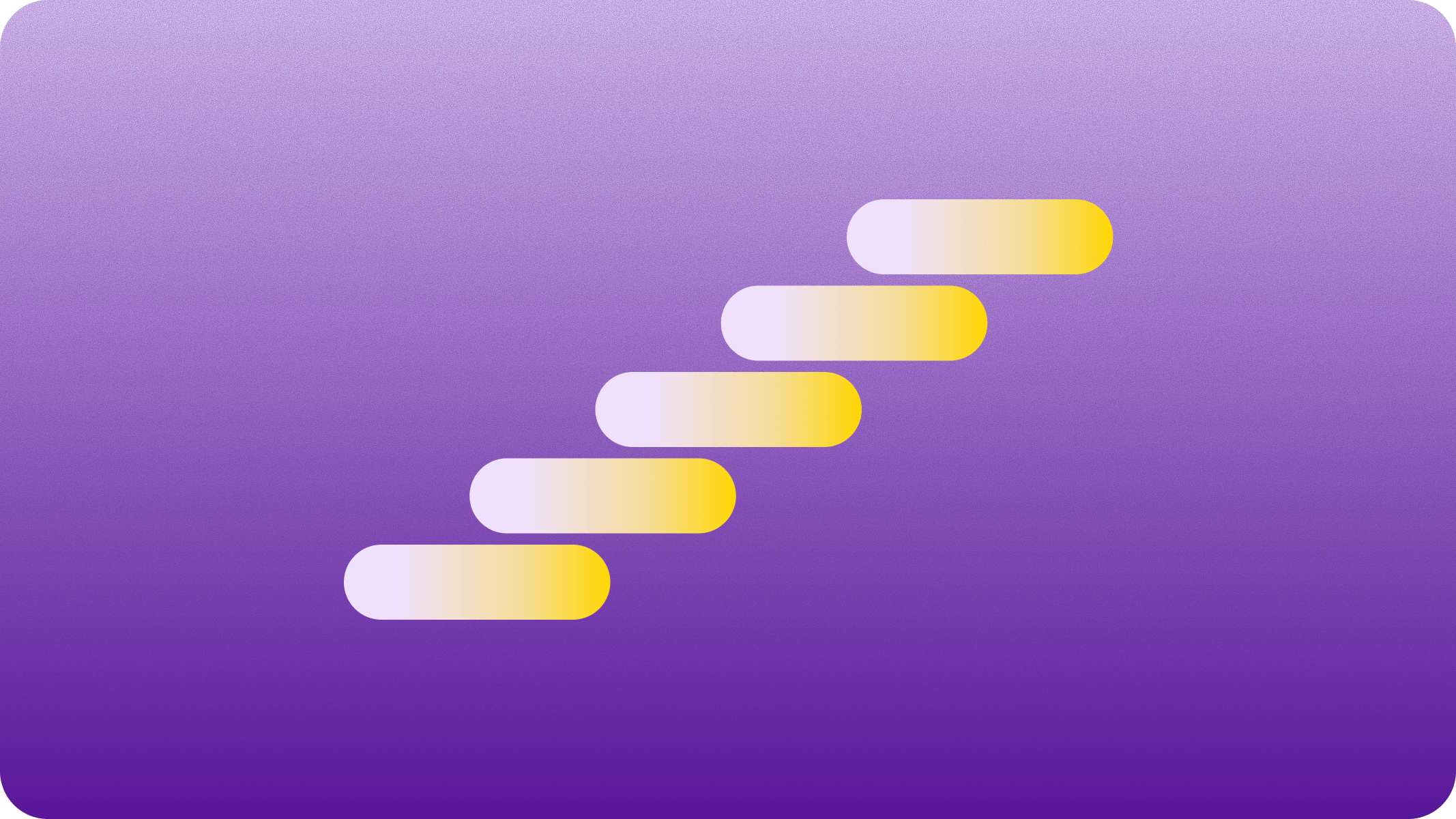Lecture transcription: Efficient lecture recording and transcription

Summary
- Lecture transcription helps students focus on understanding instead of frantic note-taking.
- Turning lectures into searchable text boosts learning, accessibility, and revision efficiency.
- Always ask permission before recording and use reliable equipment for clear audio.
- Apps like Good Tape make transcription fast, accurate, and secure so you can study smarter, not harder.
- Regularly record, back up your files, and keep improving your process for consistent, stress-free study sessions.
Have you ever left a lecture thinking, “I wish I could replay that whole thing”? Or sat in a class, frantically trying to jot down notes, only to realise later you missed half the insights? That’s where the power of transcription comes into play.
Lecture transcription can be an academic life-saver, turning those “I should’ve written that down” moments into a thing of the past. It’s converting the spoken word from your lectures into written text, making revision an easier task. No more frantic scribbling, just pure learning bliss.
Let’s explore why you should tap into this game-changer and how it will help improve your academic performance, especially in research methods.
Benefits of lecture transcription:
We know how it feels to be zoned out during lectures. Well, don’t worry because lecture transcription is here to catch every detail that slips through the cracks:
- Say goodbye to worrying about missed work: Every precious tidbit is captured, from complex concepts to essential speaker labels.
- Study smarter: With transcripts, you create a treasure trove of searchable text. Ctrl+F becomes your new friend.
- Inclusive learning: Transcripts are academic aids for those who struggle with different learning styles and find troubles with language barriers.
Apps to record lectures and convert them to text
Gone are the days of primitive note-taking. We’re in the age of apps that record your entire lecture and turn it into accurate transcripts.
The market is buzzing with options, but let’s zoom in on Good Tape. It’s like having a personal stenographer in your pocket:
- Good Tape: Record, upload, and boom – you’ve got a transcript completed.
- Accessibility is key: With Good Tape, you can access lecture content at any playback speed, anytime, anywhere. This is incredibly advantageous for conducting qualitative interviews as part of your research.
How to record and transcribe lectures in class
Here’s a blueprint for capturing accurate recordings in class:
- Seek permission first: Think of recording a lecture like borrowing someone’s notes – you need to ask first. A quick nod from your professor is your green light to record, ensuring you’re all clear to capture the lecture within the rules.
- Choose the right equipment: Use a reliable audio recording device, like a high-quality digital recorder or your smartphone. For better audio quality, especially in larger lecture halls, consider using an external microphone. This helps in capturing the entire lecture more clearly.
- Find the best spot: Position yourself in a place where you can clearly capture the lecturer’s voice. Being closer to the front can make a significant difference in the audio quality of your recording.
- Recording the lecture: Make sure your device is fully charged and has enough storage space before the lecture begins – think of it as getting your pen and paper ready for the digital age. It’s about being prepared to capture every key point and insight so you’re not left scrambling to remember them later.
- Transcribe with Good Tape: After recording the lecture, use Good Tape for audio transcription. Upload your audio files to the platform, and Good Tape will convert them into accurate lecture transcripts. This service is particularly useful for capturing detailed lecture material and ensuring you have a complete record of the class.
Best practices and tips:
Want to be a lecture transcription ninja? Follow these tips:
- Regular rituals: Record and transcribe regularly. It’s like leg day – skip it, and you’ll regret it. It will also promote consistency amongst your notes.
- Audio quality: Invest in quality audio gear. It’s the difference between “world peace” and “whirled peas” in your transcripts.
- Backup: Always have a backup recording. Because tech issues can happen.
FAQ about lecture transcription
- Is it legal to record lectures?
Think of your classroom as a place where rules matter. Before hitting record, it’s always wise to check in with your university’s guidelines. Just like you’d ask for permission before sharing someone’s notes, it’s important to ensure you’re transparent with your institution’s policies on recording lectures for personal use.
- How can I improve the audio quality of my recordings?
Capture the clear, crisp sound of knowledge by choosing the right spot and getting near to the speaker..
- How long does it take to transcribe a one-hour lecture?
Transcribing a lecture manually can feel like a marathon, often taking several hours. But with Good Tape, it’s more like a sprint. You get fast, efficient transcription that turns hours of work into a task completed in less time, making the process a convenience.
Trusted by professionals and teams at
Want to read more?
Check out these related resources
Help center (FAQ)
Is it legal to record lectures?
Usually yes, but always check your university’s policy first. Think of it like borrowing someone’s notes: transparency and permission come first.
How can I get the best audio quality?
Sit close to the lecturer, avoid noisy spots, and use an external mic if possible. Good audio means better transcripts.
How long does it take to transcribe a lecture manually?
A one-hour lecture can take several hours to transcribe by hand — but with Good Tape, it’s done in minutes.
Is Good Tape free to use?
Yes. Good Tape offers a free plan so anyone can start transcribing without a credit card.
Why should I use Good Tape?
It’s built for accuracy, speed, and simplicity — helping you focus on storytelling instead of manual transcription.
Is Good Tape secure?
Yes. Good Tape provides secure and accurate transcriptions that you can rely on. We are fully GDPR compliant. We will never train on your data. Your data is yours and you remain in control.
Can I use transcription to help with studying?
Absolutely. Transcripts make it easy to search, review, and revisit complex topics without rewatching the full lecture.
Reliable transcription for lectures
Never take notes again



